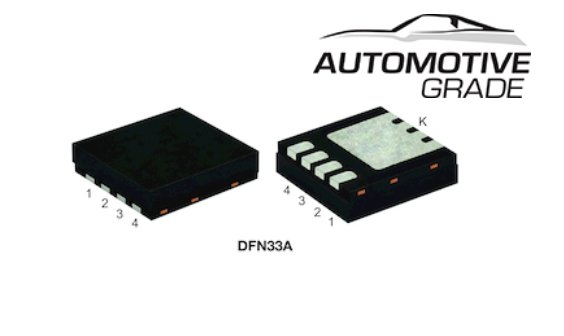May 1, 2024 /SemiMedia/ -- Silicon Labs recently announced their new xG26 family of Wireless SoCs and MCUs, the IoT industry leader's highest performance device family to date. The new family consists of the multiprotocol MG26 SoC, the Bluetooth LE BG26 SoC, and the PG26 MCU. All three are designed to future-proof the IoT against some of the most demanding emerging applications, like Matter, with double the Flash and RAM of other Silicon Labs multiprotocol devices.
"As users from consumer to industrial sectors extract more benefits from their IoT deployments, their requirements are steadily increasing," said Matt Johnson, CEO of Silicon Labs, Inc. "The new xG26 family is built for the future, empowering device manufacturers with the confidence that their current designs will meet tomorrow's demands."
To help designers build devices capable of running advanced IoT applications, the xG26 family can be equipped with:
Doubled Flash, RAM, and GPIO capacity compared to the xG24 device family, allowing IoT device builders to develop advanced edge applications. It also has double the number of general-purpose input/output (GPIO) pins as the xG24, meaning that device builders can connect it to twice as many peripherals for better system integration.
Higher performance compute in a multicore format with an ARM® Cortex®-M33 CPU and dedicated cores for the radio and security subsystems, helping to free up the main core for customer applications.
Embedded AI/ML hardware acceleration, enabling up to 8x faster processing of machine learning algorithms using as little as 1/6th the power, achieving greater energy efficiency.
Best-in-Class Security with Silicon Labs Secure Vault™ and ARM TrustZone. Using the Silicon Labs Custom Part Manufacturing Service, xG26 devices can also be hard-coded with customer-designed security keys and other features in the fabrication process, further hardening them against vulnerabilities.
2.4 GHz wireless connectivity leveraging Silicon Labs' proven, tested, and certified software stacks for 2.4 GHz wireless protocols, including Matter, Zigbee, OpenThread, Bluetooth Low Energy, Bluetooth Mesh, Proprietary, and Multiprotocol, with a best in class RF link budget that improves range and reduces transmission retries, providing a better user experience while improving battery life.
MG26 Multiprotocol SoC Designed to be Most Advanced SoC for Matter over Thread
Silicon Labs is all-in on Matter, the rapidly deploying application layer that allows devices to be interoperable between the leading IoT networks and ecosystems. Silicon Labs is Matter's leading semiconductor code contributor and third-largest contributor. The experience gained from working on Matter gave Silicon Labs deep insight into what it takes to build a device capable of growing with the needs of the Matter standard as it adds support for new device types, security enhancements, and more. Most device types have already seen Matter's code requirements grow by 6% in the first 18 months since Matter 1.0 was released in October 2022.
Consumers who invest in building Matter-enabled Smart Homes don't want their new devices to become obsolete in a few years. Instead, they want confidence that the Matter device they purchased last year will work with the same devices and be as secure as the next Matter device they buy next year. That's Matter's interoperability and security promise, which is why Silicon Labs designed the MG26 to be the most advanced SoC for the Matter standard.
Building off the same platform as the award-winning MG24 Multiprotocol Wireless SoC, the MG26 doubles its predecessor's Flash and RAM capacity and can be configured with up to 3200 kB of Flash and 512 kB of RAM. It also has double the number of general-purpose input/output (GPIO) pins as the MG24, meaning that device builders can connect it to twice as many peripherals for better system integration.
To enable greater intelligence for not only Matter-enabled applications, but all applications, the MG26, BG26, and PG26 also use Silicon Labs' proprietary Matrix Vector AI/ML hardware accelerator. This dedicated core is optimized for machine learning and can process ML operations up to 8x faster using as little as 1/6th the energy as a traditional embedded CPU. This significantly improves the family's energy efficiency because the device can offload ML-based activation or wake cues to the accelerator, allowing more power-hungry functions to sleep and minimize battery drain. This is ideal for smart home battery-operated devices like sensors or switches, where consumers look for them to fade into the background of their home and not draw their attention with the need for constant battery changes.
For more information, please visit: EFR32xG26 (xG26) Series 2 Wireless SoCs and MCUs - Silicon Labs (silabs.com)












All Comments (0)